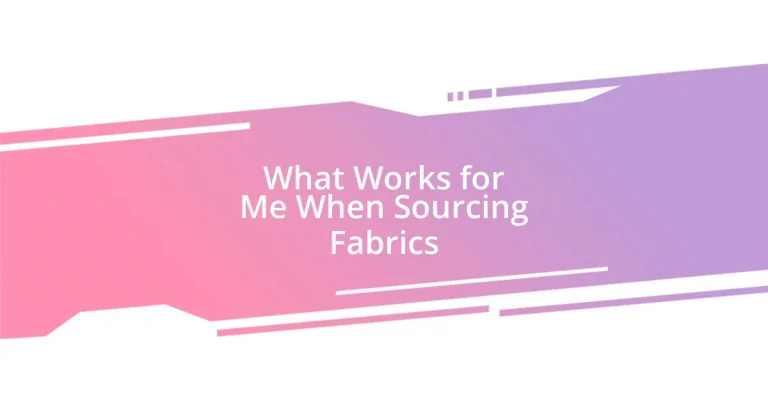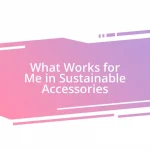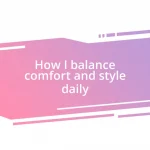Key takeaways:
- Understanding fiber content and fabric characteristics is vital for choosing the right material for projects, emphasizing the importance of hands-on experience with samples.
- Building strong relationships with suppliers through trust, open communication, and personal engagement can lead to unique opportunities and better sourcing experiences.
- Prioritizing sustainable practices, such as sourcing locally and exploring fabric certifications, adds value and narrative to designs, while upcycling creates unique and eco-friendly options.
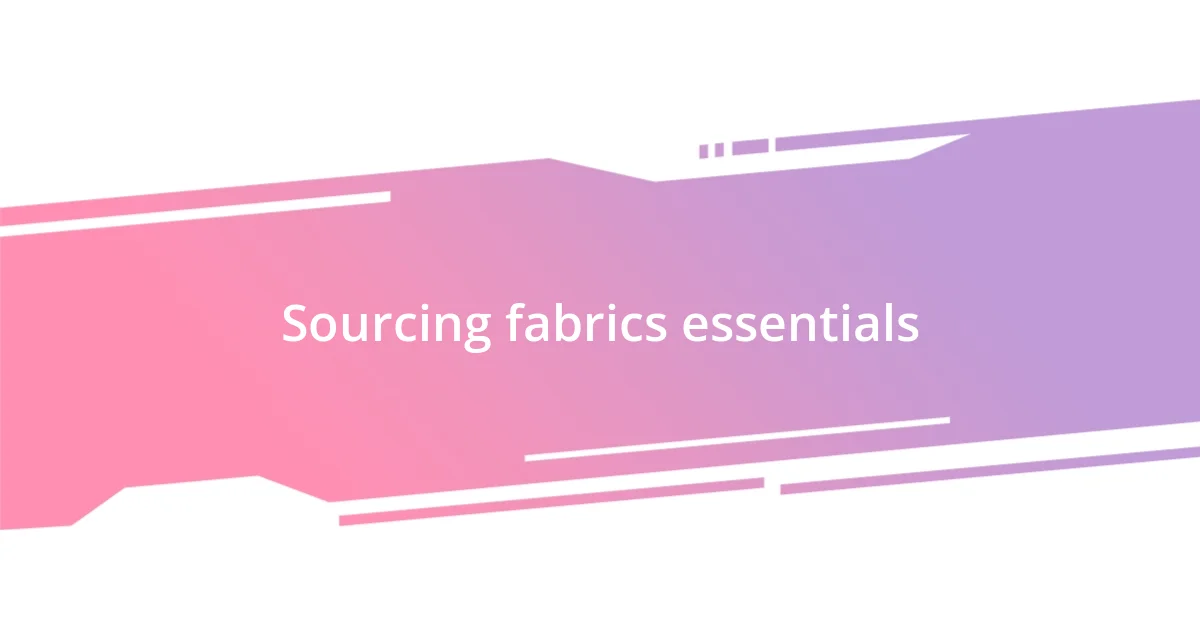
Sourcing fabrics essentials
When I first ventured into fabric sourcing, I quickly realized that understanding fiber content is crucial. Each material behaves differently; for instance, cotton is breathable and comfortable, while polyester can be more durable but less forgiving in terms of comfort. My choice often hinges on the purpose of the project – asking myself, “Will this fabric offer the right feel and longevity for my needs?”
Building relationships with suppliers has been another essential piece of my sourcing journey. Engaging in conversations beyond just transactions has opened doors to unique fabric finds and insider tips. I remember a time when a friendly supplier introduced me to a stunning specialty fabric that didn’t even make it to the regular catalog. It’s these connections that often lead to exciting surprises, don’t you think?
I also believe that testing fabric samples before committing is non-negotiable. There’s something rewarding about holding a piece in your hand, feeling its texture, and visualizing how it will drape or wear. One time, I was drawn to a vibrant silk that looked fantastic online, but when I felt it, I realized it wasn’t nearly as soft as I expected. What a reminder that firsthand experience beats any photograph!
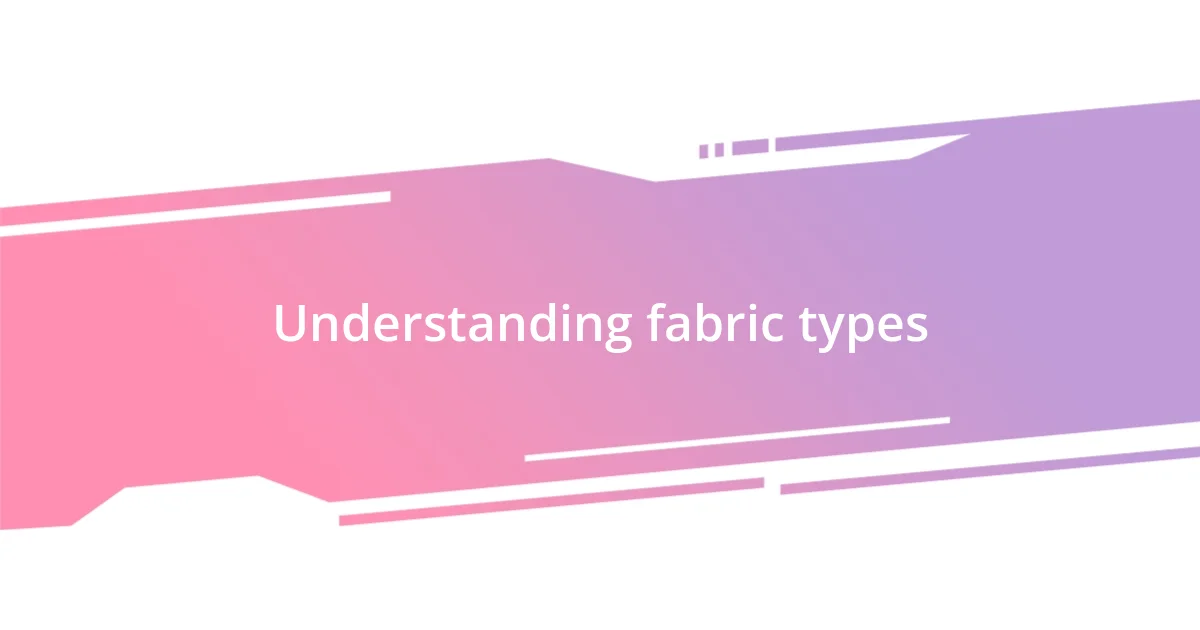
Understanding fabric types
Understanding the various types of fabric is pivotal in sourcing the right material for any project. I remember my first encounter with linen; it surprised me with its unique texture and breathability. It felt like a gentle embrace, perfect for summer wear, though I learned that it wrinkles easily, which can be a con for some. This kind of first-hand knowledge about fabric characteristics helps me make informed decisions.
When it comes to synthetic fabrics, I’ve discovered a whole new world. The first time I worked with lycra, I was amazed by its stretch and recovery, which made it ideal for activewear. Yet, I also found out that too much lycra can mean less breathability, making it less suitable for warm climates. Each fabric type tells a story about its ideal use, and reflecting on these experiences really shapes my sourcing choices.
Sometimes, understanding fabric types is about contrasting qualities. For example, wool warms you up beautifully in winter, but its itchiness can deter some people. I often weigh comfort against performance, especially when designing items meant for different seasons or activities. That balancing act has become part of my fabric philosophy.
| Fabric Type | Characteristics |
|---|---|
| Cotton | Breathable, comfortable, and versatile |
| Polyester | Durable, resistant to wrinkles, but can lack breathability |
| Linen | Lightweight, breathable, but prone to wrinkles |
| Silk | Luxurious, smooth, but can be delicate and less forgiving |
| Wool | Warm, insulating, but may irritate sensitive skin |
| Lycra | Highly elastic, great for activewear, but can reduce breathability |
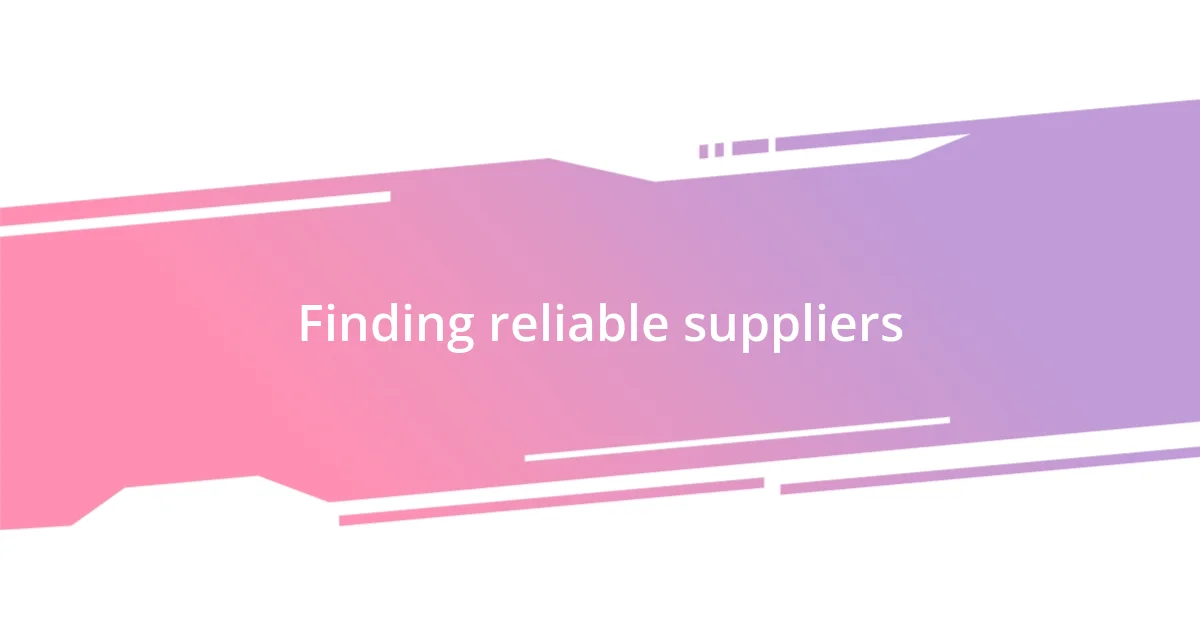
Finding reliable suppliers
Finding reliable suppliers is a journey that demands attention and a bit of intuition. I’ve found that diving into supplier backgrounds can unveil a wealth of information. For instance, I once researched a vendor’s reputation on industry forums and discovered glowing reviews of their customer service and fabric quality. This knowledge made me confident when I reached out; it felt good knowing I was connecting with a trusted partner.
Here are a few tips that have worked for me in identifying reliable suppliers:
- Seek Recommendations: Ask fellow designers or industry peers for their trusted sources. Personal experiences often reveal the most reliable suppliers.
- Check Certifications: Suppliers with certifications (like OEKO-TEX for safety) can often be more trustworthy.
- Start Small: Place a small order first. This allows you to assess quality and delivery speed without a huge commitment.
- Evaluate Communication: A responsive and transparent supplier is often a good sign. Look for those who value clear and prompt communication.
- Visit Trade Shows: I love walking through fabric fairs to meet suppliers face-to-face. There’s nothing like the vibe of a live interaction to gauge trustworthiness.
Building these relationships can be time-consuming, but they pay off immensely in the long run. When I first established a connection with a small family-run textile mill, it felt like I’d hit the jackpot. Not only did they offer exceptional fabrics that told a story of craftsmanship, but they also treated me like part of their family. That kind of rapport makes each sourcing experience more enjoyable and enriching.
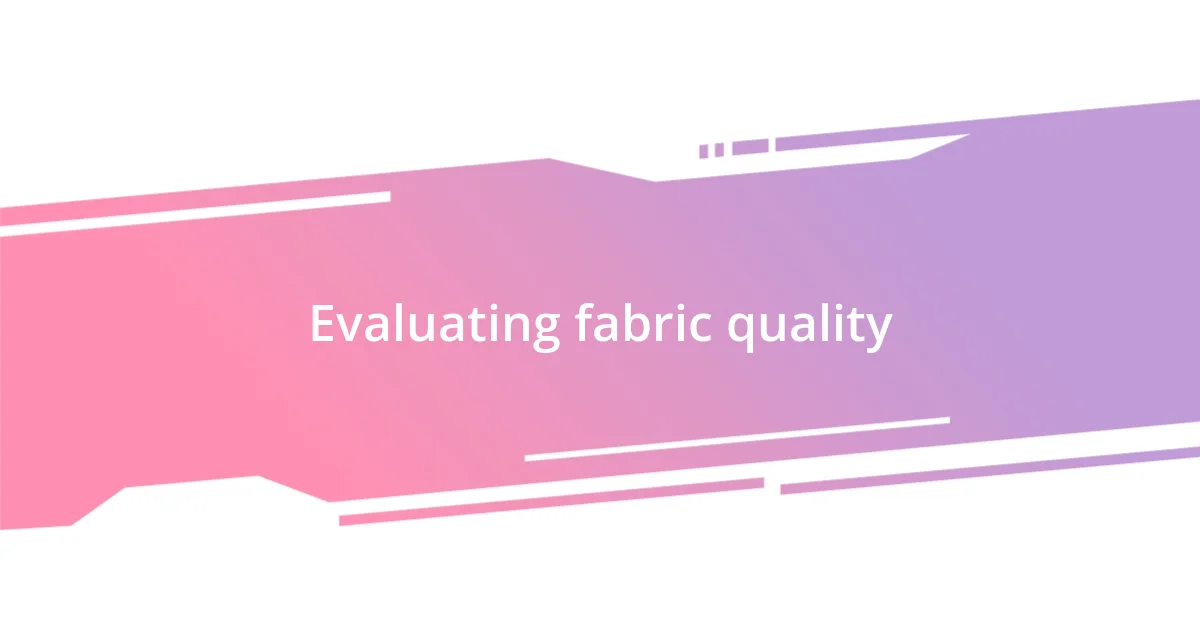
Evaluating fabric quality
Evaluating fabric quality is a nuanced process that I’ve learned to embrace over the years. The first thing I often do is check the weight. A fabric that feels substantial usually suggests durability, but I’ve also learned that heavy doesn’t always mean better; sometimes, lightweight fabrics can surprise you with their strength. Have you ever picked up a seemingly delicate chiffon only to discover it stands up beautifully to wear and tear? It’s a lesson in perception versus reality.
Another critical factor is the finish. I’m particularly fond of how a fabric drapes, as it can dramatically affect the overall design. I once sourced a gorgeous satin that looked stunning hanging on the rack, but when I cut into it, I felt it slipping away in my hands. That was an eye-opener for me. I realized that tactile engagement with the fabric is essential; no matter how good it looks, it has to work for my intended design.
Lastly, I never overlook the feel of the fabric against my skin. Comfort is paramount, especially if the final product will be worn. I remember when I first worked with a cotton-modal blend; it felt like a dream against my skin, offering both softness and breathability. It’s this intimate connection with the fabric that often seals the deal for me. When evaluating fabric quality, it’s about creating that sensory experience that resonates with the vision I have for the project.
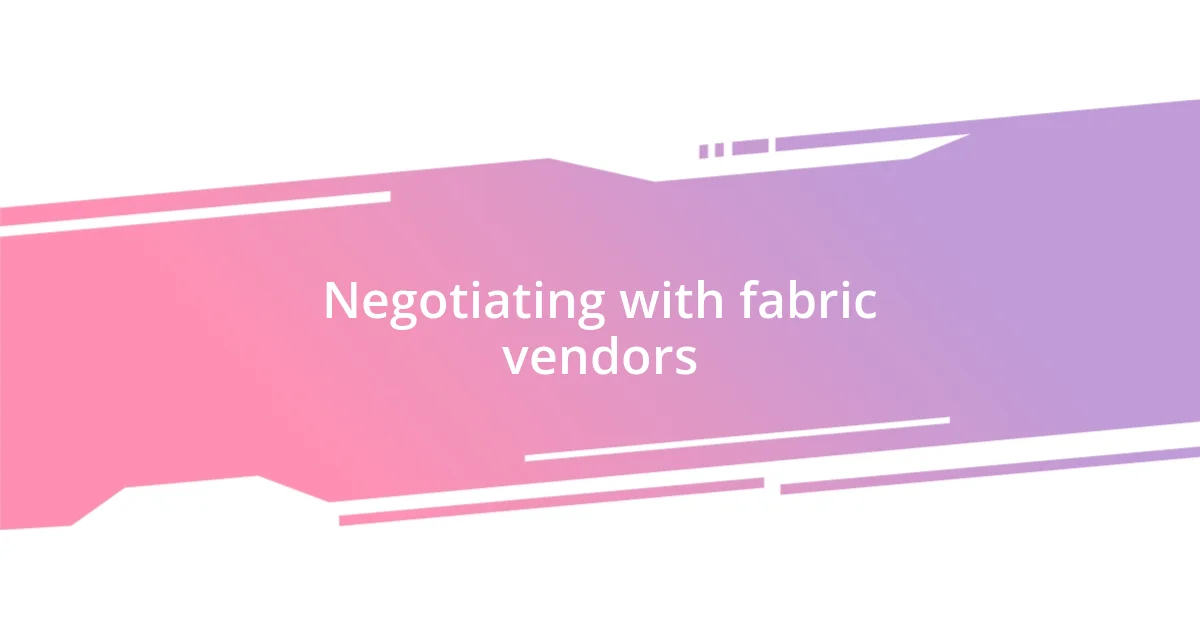
Negotiating with fabric vendors
When it comes to negotiating with fabric vendors, I’ve learned that preparation is everything. I always enter discussions with a clear understanding of my budget and the market prices. One time, I was surprised when a vendor quoted me a price much higher than I expected. Armed with current pricing data, I confidently shared my findings, which led to a better deal. Isn’t it amazing how knowledge can shift the balance in your favor?
Building a rapport with vendors is equally important. I often find that a friendly, personal touch goes a long way. For instance, I once shared a story about my early struggles in sourcing—how I nearly drowned in a sea of available options, unsure of which fabric to choose. That anecdote sparked a connection, and the vendor opened up with recommendations tailored to my style. Have you ever noticed how honest conversation can create a collaborative atmosphere?
Furthermore, don’t hesitate to ask for samples or negotiate terms. I remember when a vendor was hesitant to offer a discount on a bulk order. I suggested a trial order with a reduced price to build trust and relationship. To my surprise, they agreed! That simple suggestion transformed our interaction into a partnership. Negotiation isn’t just about getting the best price; it’s about fostering long-term relationships that can evolve and yield benefits down the line.
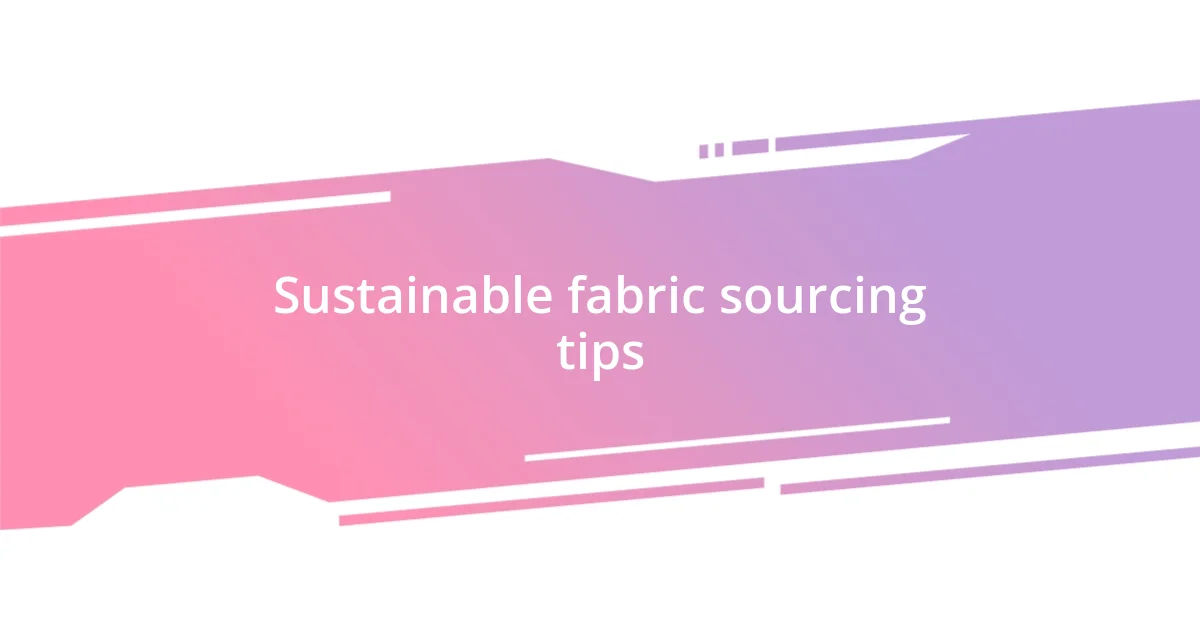
Sustainable fabric sourcing tips
Sourcing sustainable fabrics requires a conscious choice, and one of my top tips is to prioritize local suppliers. I remember the thrill of visiting a nearby organic cotton farm, where I could see the dedication and care that went into growing the fabric. It was refreshing to shake hands with the people behind the product and hear their stories. Do you think knowing the source of your fabric adds value to your designs? For me, it transforms a simple piece of cloth into a story of sustainability and heart.
Another effective strategy is to dive deep into fabric certifications, something I wish I had done sooner. The first time I encountered GOTS (Global Organic Textile Standard) certified fabric, I felt a surge of excitement. Not only did it assure me of its organic integrity, but learning about the rigorous processes behind it made me appreciate the fabric even more. Have you ever found yourself questioning what’s truly sustainable? Understanding these certifications can often clear the fog of uncertainty.
Lastly, don’t underestimate the power of upcycling. I once stumbled upon a basket of scrap fabrics in a local thrift store and saw potential where others might not. The thrill of transforming discarded materials into something beautiful has brought a sustainable flair to my work. Are you open to exploring the creative possibilities of upcycled fabrics? Embracing upcycling not only reduces waste but can also lead to truly unique designs that stand out.
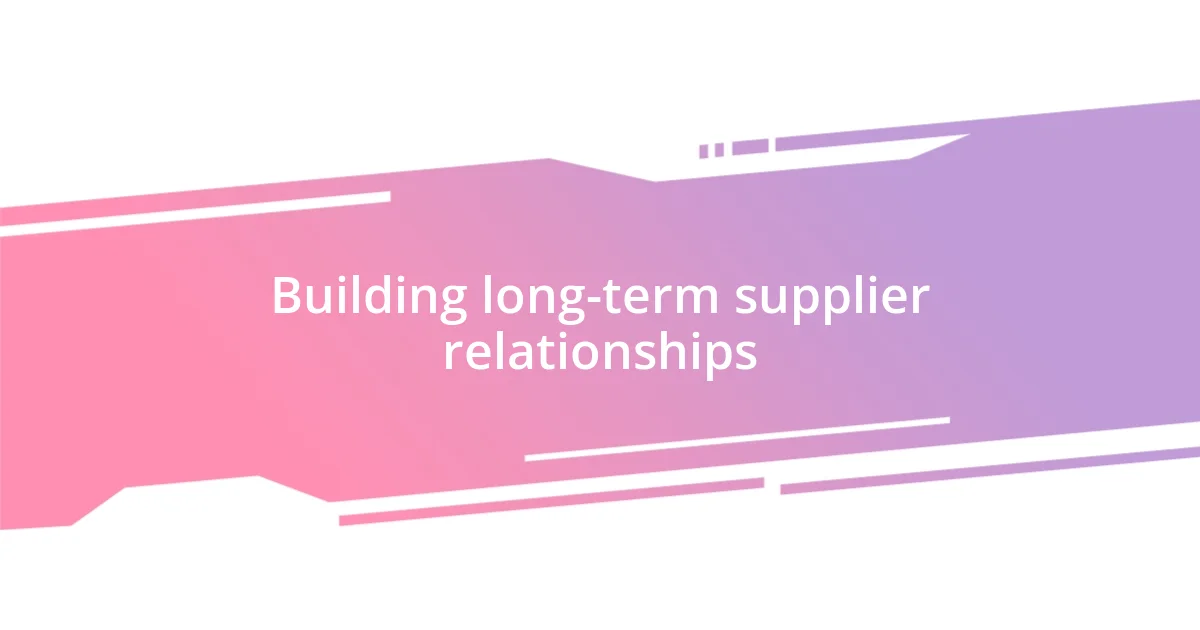
Building long-term supplier relationships
Building long-term supplier relationships is a game-changer in the fabric sourcing process. I recall an instance where I consistently worked with a small dyeing company. The more I engaged with them, the more they began to offer me exclusive colors and techniques that weren’t available to other clients. Isn’t it fascinating how loyalty can unlock doors to unique opportunities?
Trust is the cornerstone of any successful partnership. When I was first getting to know a supplier, I made it a point to visit their facility regularly. Each visit allowed me to understand their processes and people better, fostering a genuine connection. Have you ever noticed how seeing behind the curtain can enhance your appreciation for what goes into the fabric you source? It certainly did for me, and it kept the lines of communication open and honest.
Moreover, transparency in communication can significantly impact your supplier relationships. Early on, I faced a challenge when a shipment was delayed, which caused a ripple effect in my production timeline. Instead of getting frustrated, I chose to discuss my concerns openly with the vendor. This approach led to a collaborative solution that benefited both of us. Have you experienced challenges in your supplier relationships? I’ve learned that when you communicate openly, you can transform those challenges into opportunities for growth and deeper connections.












